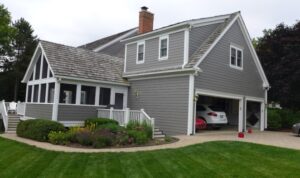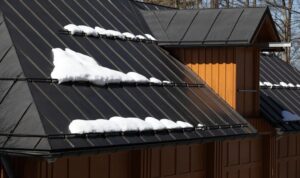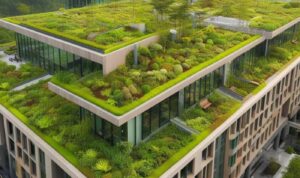Exploring cost-effective roofing solutions for large buildings opens up a world of possibilities for property owners and developers. From innovative materials to sustainable practices, this guide delves into the realm of roofing solutions that not only save costs but also enhance the overall quality and longevity of large building structures.
As we navigate through the nuances of cost-effective roofing solutions, we uncover key insights that can revolutionize the way we approach roofing projects for large buildings.
Cost-Effective Roofing Solutions for Large Buildings
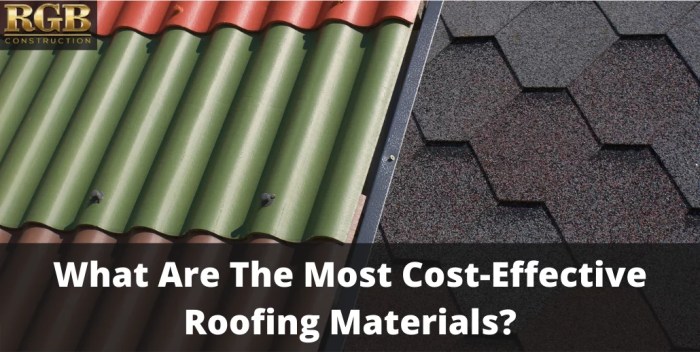
When it comes to large buildings, cost-effective roofing solutions play a crucial role in ensuring the longevity and sustainability of the structure. These solutions not only help in reducing initial construction costs but also provide long-term benefits in terms of maintenance and energy efficiency.
Challenges and Considerations when Selecting Roofing Solutions
- Roofing Material Durability: Selecting materials that can withstand the harsh weather conditions and have a long lifespan is essential for large buildings.
- Energy Efficiency: Opting for roofing materials that can help in reducing energy consumption by providing insulation and reflecting sunlight can lead to cost savings in the long run.
- Installation Costs: Considering the installation costs of roofing materials is crucial to ensure that the overall project remains within budget.
Examples of Cost-Effective Roofing Materials
- Metal Roofing: Metal roofs are durable, lightweight, and require minimal maintenance, making them a cost-effective option for large buildings.
- TPO Roofing: Thermoplastic Polyolefin (TPO) roofing membranes are energy-efficient, easy to install, and cost-effective, making them a popular choice for large commercial buildings.
- EPDM Roofing: Ethylene Propylene Diene Terpolymer (EPDM) roofing is known for its durability and low installation costs, making it a cost-effective solution for large buildings.
Long-Term Benefits of Investing in Cost-Effective Roofing Solutions
- Cost Savings: By choosing cost-effective roofing solutions, building owners can save money on initial construction costs and enjoy lower maintenance expenses in the long term.
- Energy Efficiency: Energy-efficient roofing materials can help in reducing heating and cooling costs, resulting in long-term savings on utility bills.
- Increased Property Value: Investing in quality roofing solutions can enhance the overall value of the building, making it more attractive to potential buyers or tenants.
Types of Cost-Effective Roofing Materials
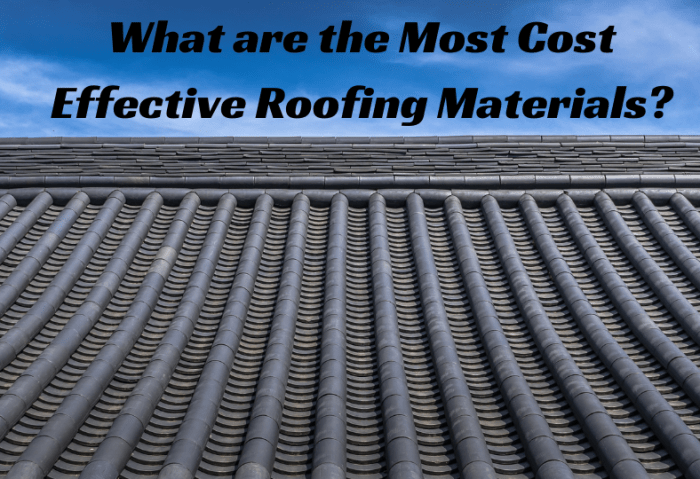
Metal Roofing, Asphalt Shingles, EPDM, and more are popular cost-effective roofing materials used in large buildings. Let's dive into a comparison of their durability, cost-effectiveness, and environmental impact.
Metal Roofing
Metal roofing is known for its durability and longevity, making it a cost-effective choice for large buildings. While the initial cost may be higher than other materials, metal roofing requires minimal maintenance and can last 50+ years. It is also recyclable, reducing environmental impact.
Asphalt Shingles
Asphalt shingles are a common choice due to their affordability. While they have a shorter lifespan compared to metal roofing, they are still a cost-effective option for large buildings. However, asphalt shingles are not as environmentally friendly as metal roofing, as they contribute to landfill waste.
EPDM
EPDM (Ethylene Propylene Diene Terpolymer) is a synthetic rubber roofing membrane known for its durability and cost-effectiveness. It is easy to install and repair, making it a popular choice for large buildings. EPDM is also environmentally friendly, as it is recyclable and energy-efficient.
Installation and Maintenance Practices
Installing cost-effective roofing solutions in large buildings requires following best practices to ensure durability and longevity. Regular maintenance is crucial to extending the lifespan of these systems and reducing overall costs in the long run.
Best Practices for Installation
Proper installation of cost-effective roofing solutions involves hiring experienced professionals who are familiar with the specific materials being used. It is essential to follow manufacturer guidelines and recommendations to ensure the roof is installed correctly. Additionally, conducting thorough inspections before and after installation can help identify any potential issues that may arise in the future.
Importance of Regular Maintenance
Regular maintenance is key to preserving the integrity of cost-effective roofing systems. Inspecting the roof regularly for damage, leaks, or wear and tear can help address issues before they escalate into costly repairs. Implementing a routine maintenance schedule can help extend the lifespan of the roof and prevent unexpected expenses.
Tips for Reducing Maintenance Costs
- Conduct regular inspections and address any issues promptly to prevent costly repairs.
- Keep the roof clean and free of debris to prevent water pooling and damage.
- Trim nearby trees to prevent branches from damaging the roof during storms.
- Invest in high-quality materials and workmanship to reduce the need for frequent repairs.
- Consider applying protective coatings to extend the lifespan of the roof and reduce maintenance requirements.
Contribution to Cost Savings
Proper installation and regular maintenance of cost-effective roofing solutions can significantly contribute to cost savings in the long run. By addressing issues early on, preventing damage, and extending the lifespan of the roof, building owners can avoid costly repairs and replacements.
Investing in quality installation and maintenance practices upfront can result in significant savings over the life of the roof.
Energy-Efficient Roofing Solutions
Energy-efficient roofing solutions play a crucial role in reducing heating and cooling costs for large buildings, making them a cost-effective option in the long run.
Benefits of Energy-Efficient Roofing
- Improved insulation properties leading to reduced energy consumption for heating and cooling.
- Reflective surfaces that help in maintaining lower temperatures and reducing the load on HVAC systems.
- Durable materials that require less maintenance, resulting in long-term cost savings.
Case Studies on Cost Savings
One case study showed a reduction of 15% in energy costs after installing an energy-efficient roof on a large commercial building in a hot climate.
Another study demonstrated a 20% decrease in heating expenses during winter months with the use of energy-efficient roofing materials in a cold climate.
Final Wrap-Up
In conclusion, embracing cost-effective roofing solutions for large buildings not only ensures financial savings but also contributes to a more sustainable and resilient built environment. By prioritizing efficiency and durability, property owners can secure a brighter future for their structures while minimizing maintenance costs in the long run.
FAQ Explained
Are metal roofs a cost-effective option for large buildings?
Metal roofs are indeed a popular choice for large buildings due to their durability and longevity, making them a cost-effective solution in the long term.
How can regular maintenance impact the cost-effectiveness of roofing solutions for large buildings?
Regular maintenance is crucial for prolonging the lifespan of roofing systems in large buildings, ultimately reducing repair costs and ensuring optimal performance.
What environmental benefits do EPDM roofing materials offer for large buildings?
EPDM roofing materials are known for their energy efficiency and recyclability, making them an environmentally friendly choice for large building projects.



